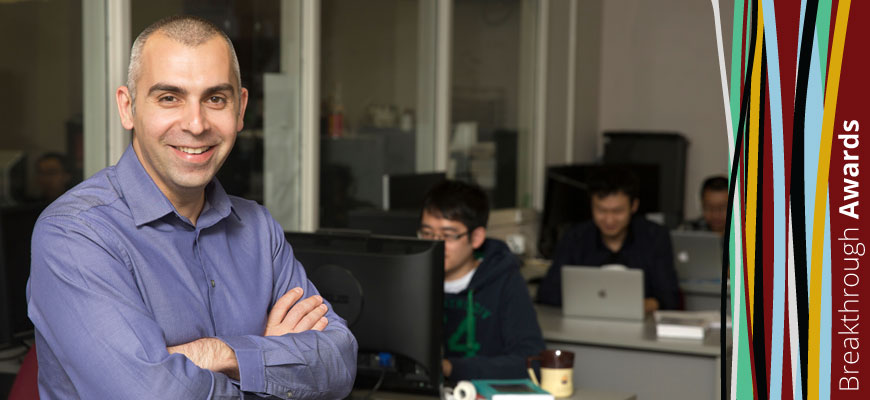
Known unknowns
Computer science and engineering researcher Gabriel Terejanu creates algorithms to reduce uncertainty
Posted on: May 19, 2017; Updated on: May 19, 2017
By Craig Brandhorst, CraigB1@mailbox.sc.edu, 803-777-3681
Life is filled with uncertainty; science, even more so. And running sophisticated computer models to analyze large sets of data and identify meaningful trends? An indisputable boon for discovery, modeling itself introduces a whole new round of errors, sometimes leaving researchers flummoxed.
Welcome to the burgeoning field of uncertainty quantification — and to the world of Gabriel Terejanu, an assistant professor of computer science and engineering whose knowledge of uncertainty is attracting collaborators from the cornfield to the classroom.
“Basically, I develop algorithms and models to accelerate scientific discoveries and decision-making under uncertainty,” says Terejanu.
One day, Terejanu might be working with Sourav Banerjee in mechanical engineering and Anindya Chanda, a fungal biologist at the Arnold School of Public Health, to develop models to study aflatoxin, a carcinogenic fungus that grows on corn and other agricultural products. Next, he’s working with Andreas Heyden, an associate professor of chemical engineering, trying to improve catalysis for the biorefining industry.
A model, in the theoretical context, is a cartoon. It does not capture all of the intricacies that we have in reality.
Gabriel Terejanu
And then there’s yet another collaboration — this one with civil engineering faculty Juan Caicedo and Charles Pierce — that offers potential applications even closer to home, or rather the classroom.
“The idea there is, can we actually find ways to model student knowledge?” Terejanu posits. “We now have models that try to capture student knowledge — what they know and what they don’t know. We are still early on in this project, but if we can identify what they know and don’t know, maybe we can create remedial interventions.”
Terjanu doesn’t have all the answers, of course. No one does. But when it comes to computer models and simulations, he knows how to spot the errors. He also knows how to anticipate and account for those errors before scientists embark on costly experiments that might lead to a dead end.
“The projects are all a little bit different, but to me, in a way, all the problems look alike. There are some basic commonalties,” says Terejanu. “If you think about experimentation, every measurement that you’re taking is uncertain. A model, in the theoretical context, is a cartoon. It does not capture all of the intricacies that we have in reality. It is inherently uncertain, because its missing a lot of processes.”
Ultimately, Terejanu can almost be thought of as a consultant, one skilled in observing the otherwise unobservable, regardless of the field.
“My approach is like a more formalized scientific method that now encapsulates uncertainty,” he says. “If a faculty member is doing models, I know how to talk with them, how to extract from them where they think the errors might be, as I have a good understanding of how the models get created.”